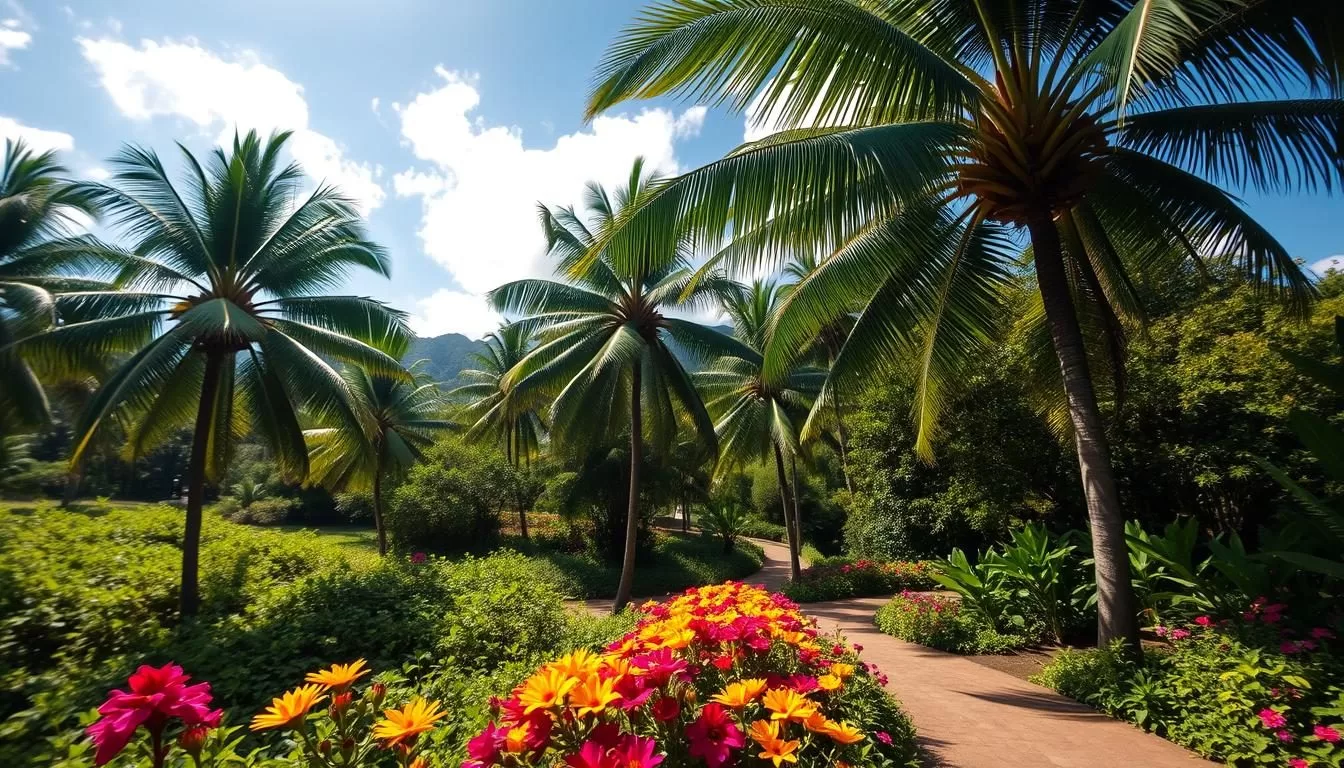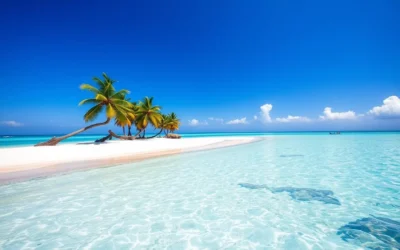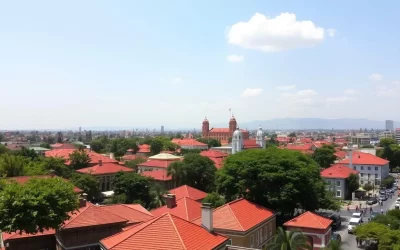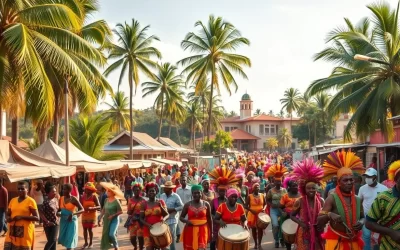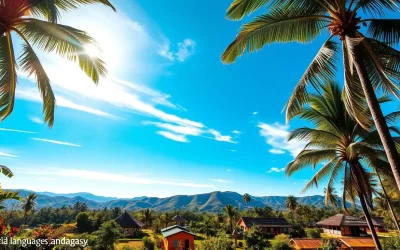Planning a trip to this incredible island requires a deep understanding of its complex climate patterns, which vary significantly across different regions.
As one of the world’s most biodiverse destinations, Madagascar offers incredible experiences that are heavily influenced by seasonal weather conditions. To make the most of your adventure, it’s crucial to determine the optimal time to visit.
This comprehensive guide will help you find the best balance of favorable weather and wildlife viewing opportunities across Madagascar’s diverse landscapes.
By understanding the wet and dry seasons, you can plan a successful trip that maximizes your enjoyment of this extraordinary island nation.
Understanding Madagascar’s Unique Climate
Understanding the climate of Madagascar is crucial for planning a successful trip to this diverse island. Madagascar’s climate varies significantly across different regions, making it essential to grasp the overall weather patterns to make the most of your travel plans.
The Island’s Diverse Microclimates
Madagascar is characterized by a range of microclimates due to its varied geography. From the tropical rainforests in the east to the arid desert landscapes in the south, each region has its unique weather patterns. The central highlands experience a temperate climate, while the coastal regions tend to be warmer and more humid. This diversity means that the time of year you choose to visit can significantly impact your experience.
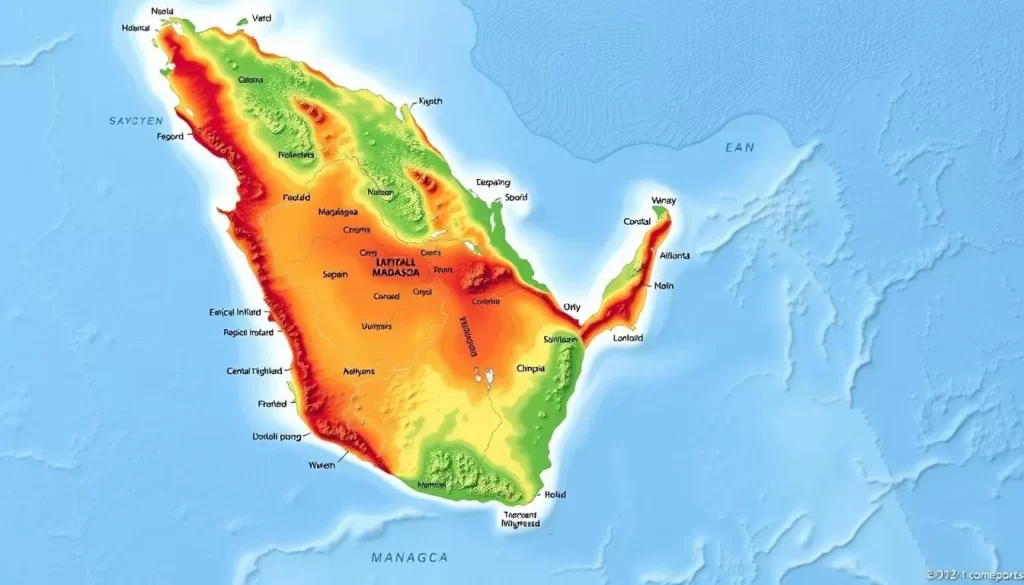
Wet Season vs. Dry Season Overview
Madagascar generally experiences two distinct seasons: a hot, rainy season from November to April, and a cooler, dry season from May to October. The wet season brings lush landscapes and abundant plant growth, but it can also make travel challenging due to damaged roads and potential cyclones. In contrast, the dry season offers clearer skies and more comfortable temperatures, making it the preferred time for most travelers.
The transition months between these seasons offer unique advantages, with fewer tourists and increasingly favorable weather conditions. Your decision about when to visit should balance weather considerations with your specific interests and the regions you plan to explore.
Madagascar’s Weather Patterns by Region
Madagascar’s varied climate is influenced by its geography, resulting in distinct weather patterns across the island. As you explore the different regions, you’ll notice significant variations in temperature, humidity, and precipitation.
Northern Madagascar (Nosy Be, Antsiranana)
Northern Madagascar, including Nosy Be and Antsiranana, experiences a tropical climate with high temperatures and high humidity throughout the year. The region’s weather is characterized by a wet season from November to March and a dry season from April to October. The best time to visit this destination is during the dry season, when the weather is more favorable for outdoor activities.
Central Highlands (Antananarivo)
The Central Highlands, where the capital city Antananarivo is located, have a temperate climate with distinct seasons. Winters are cool and dry, while summers are mild and wet. The region experiences a significant drop in temperature at night, even during the summer months, making it essential to pack layers.
Eastern Rainforests
The Eastern Rainforests are known for their high levels of rainfall throughout the year, with the most significant precipitation occurring from January to March. The region’s lush vegetation and diverse wildlife make it a popular place for nature lovers and adventure seekers.
Southern Arid Regions
The Southern Arid Regions of Madagascar are characterized by a semi-desert climate, with very little rainfall throughout the year. The region experiences its minimal rainy season from December to February, but the precipitation remains low. April through October is considered the best period to explore the spiny forests and unique landscapes of the south.
| Region | Climate | Best Time to Visit |
|---|---|---|
| Northern Madagascar | Tropical | April to October |
| Central Highlands | Temperate | September to November |
| Eastern Rainforests | Tropical Rainforest | April to October |
| Southern Arid Regions | Semi-desert | April to October |

Understanding the weather patterns in each region of Madagascar is crucial for planning your trip. By choosing the right month to visit each area, you can ensure a more enjoyable and fulfilling experience on this unique island.
January to March: The Heart of Rainy Season
January to March marks the peak of the wet season in Madagascar, a time when the island’s landscapes are rejuvenated and its biodiversity is particularly vibrant. This period is characterized by significant rainfall, which, while presenting some challenges, also offers unique opportunities for travelers.
Weather Conditions and Challenges
The rainy season brings heavy downpours and high humidity, making some outdoor activities more challenging. However, the rain also brings life to the island, making it a great time to see Madagascar’s flora at its most lush.
Benefits of Visiting During This Period
Visiting Madagascar during the rainy season has its advantages. The island is less crowded, and the lush landscapes provide a picturesque backdrop for various activities. Moreover, the rain brings out the vibrant colors of the island’s flora, making it a photographer’s paradise.
Activities Best Suited for the Wet Season
Despite the rain, many activities remain viable during the wet season. The waters around northern Madagascar remain relatively calm, allowing for snorkeling and diving to observe vibrant marine life. Some of the activities that thrive during this period include:
- Bird watching, as many species are in breeding plumage and more active
- Photography, with lush landscapes and dramatic skies providing unique shooting opportunities
- Cultural activities and interactions with local communities, which can be more authentic during this less-touristed time

April to May: Transition Season Benefits
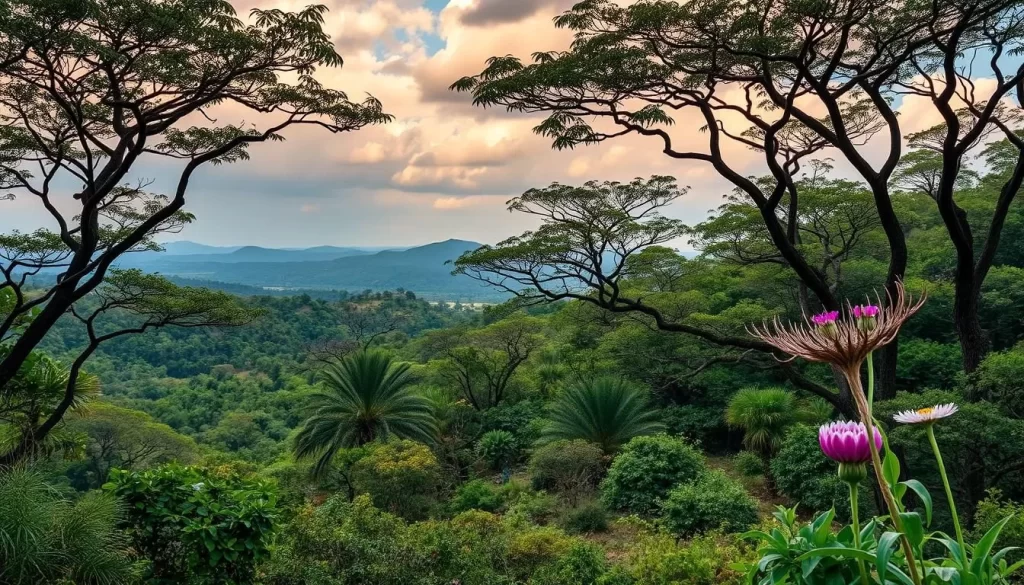
The transition period in Madagascar, from April to May, is a hidden gem for travelers. During this time, the island nation offers a unique blend of experiences that cater to various interests.
Post-Rain Lush Landscapes
After the rainy season, Madagascar’s landscapes are rejuvenated, making it a photographer’s paradise. The lush greenery and refreshed water bodies create a serene environment, perfect for exploration. You can enjoy the vibrant flora and fauna that make this destination so unique.
Decreasing Rainfall Patterns
As April transitions into May, the rainfall decreases significantly, making it easier to plan your activities. Trails begin to dry out, and the overall weather becomes more favorable for outdoor adventures.
Ideal Activities During Transition Months
This period is ideal for a wide range of activities, including hiking, trekking, and wildlife viewing. The eastern rainforests are particularly inviting before the peak tourist season begins. You can explore the diverse regions of this beautiful destination without the crowds, making the most of your travel time.
June to August: Madagascar’s Prime Tourist Season

Madagascar’s prime tourist season, which spans from June to August, is characterized by favorable weather conditions across the island. This period is ideal for travelers who wish to explore the diverse landscapes and ecosystems that Madagascar has to offer.
Weather Conditions Across the Island
The weather during these months is generally dry and mild, making it an excellent time for outdoor activities such as hiking, wildlife viewing, and exploring the island’s beautiful beaches. The central highlands experience mild temperatures, while the coastal regions enjoy warm weather without the intense heat of the summer months.
Wildlife Viewing Opportunities
June to August offers excellent opportunities for wildlife viewing. The dry conditions make it easier to spot lemurs, fossa (Madagascar’s top predator), and a variety of bird species in the national parks. The cooler months also make it more comfortable for both tourists and wildlife enthusiasts to explore the forests and reserves.
Popular Destinations During This Period
Popular destinations during this time include Nosy Be, known for its beautiful beaches and diving opportunities, and Andasibe-Mantadia National Park, which is renowned for its lush rainforests and diverse wildlife. The capital city, Antananarivo, also attracts visitors with its historical sites and cultural experiences.
Booking Considerations and Crowds
It’s essential to consider that June through August is Madagascar’s high season, which means popular accommodations and tours require advance bookings. Travelers should also be prepared for larger crowds, especially at well-known national parks and beaches. Additionally, the peak tourist season comes with higher rates for accommodations, guides, and some activities. Planning ahead is crucial to ensure a smooth and enjoyable trip.
Despite the crowds, the reliable weather and excellent conditions make this a worthwhile time to visit if you plan ahead. July and August, coinciding with European summer holidays, further increase visitor numbers and demand for services, making it even more important to book early.
September to October: The Sweet Spot for Travel
As the dry season progresses, September and October emerge as ideal months for visiting Madagascar. The weather is pleasant across the island, making it perfect for a variety of activities.
Ideal Weather Conditions
The climate during these months is characterized by clear skies and comfortable temperatures, ideal for exploring Madagascar’s diverse landscapes. You can enjoy pleasant weather in both the highlands and the coastal regions.
Baby Lemur Season
September and October are particularly exciting for wildlife enthusiasts as they coincide with baby lemur season. Many lemur species give birth during this time, offering a unique opportunity to see these adorable creatures up close.
Coastal Activities and Marine Life
The coastal waters around Madagascar are at their clearest during September and October, making it an excellent time for snorkeling and diving. You can explore the island’s vibrant marine life, including whale sharks in the northwestern waters and humpback whales in the northeast. The beaches of Nosy Be and other northern islands are particularly inviting, with calm seas and pleasant temperatures. The comfortable waters make it ideal for swimming and other water activities throughout the day.

November to December: Early Rainy Season
The early rainy season in Madagascar, spanning November and December, offers a unique experience for those willing to brave the elements. While the weather becomes more unpredictable, the island transforms, offering lush landscapes and various activities for the adventurous traveler.
Weather Patterns and Regional Variations
During November and December, Madagascar’s weather patterns begin to shift towards the rainy season, with regional variations playing a significant role. The eastern parts of the island tend to receive more rainfall compared to the western regions. Understanding these variations can help you plan your trip effectively.
Holiday Season Considerations
As the year comes to a close, Madagascar prepares for the holiday season, which can be a fascinating time to experience local culture. Visiting during this period allows you to participate in unique cultural events and enjoy the festive atmosphere in various communities.
Activities Still Enjoyable in Early Rains
Despite the onset of the rainy season, many activities remain enjoyable, particularly in the morning hours before the typical afternoon showers. The waters around northern Madagascar remain clear enough for snorkeling and diving, especially in early November. Additionally, the renewed vitality of the landscapes creates beautiful contrasts for photography, and wildlife viewing continues to offer good opportunities.
Madagascar: Best Months for a Weather-Savvy Trip Based on Activities
Madagascar’s unique wildlife, stunning landscapes, and vibrant cultural events make it a year-round destination, but certain activities are best enjoyed during specific months. Understanding the best times for various activities can help you plan a more fulfilling trip.
Wildlife Viewing and Lemur Spotting
The dry season, from June to September, is ideal for wildlife viewing as animals congregate around water sources, making them easier to spot. This period is particularly good for lemur spotting, as the dry undergrowth makes it simpler to track these unique creatures.
Beach and Marine Activities
For beach lovers and those interested in marine activities, the dry season offers calm seas and clear waters, perfect for snorkeling and diving. The period from April to October is particularly favorable due to the reduced risk of cyclones and pleasant weather conditions.
Hiking and Trekking
The cooler, drier months from May to September are best for hiking and trekking. The weather is more comfortable, and the trails are less slippery, making it safer and more enjoyable to explore Madagascar’s diverse landscapes.
Cultural Festivals and Events
Madagascar’s culture is rich and vibrant, with numerous events and celebration throughout the year. The dry season hosts many significant cultural festivals, including the Famadihana ceremony, which typically takes place between July and September. Events like Independence Day on June 26 showcase Malagasy culture through parades and festivities.
| Activity | Best Months | Reason |
|---|---|---|
| Wildlife Viewing and Lemur Spotting | June to September | Dry season concentrates animals around water sources |
| Beach and Marine Activities | April to October | Calm seas and clear waters |
| Hiking and Trekking | May to September | Cooler, drier weather and safer trails |
| Cultural Festivals and Events | June to September | Significant cultural events like Famadihana and Independence Day |
Planning Around Cyclone Season
As you prepare for your journey to Madagascar, knowing about the cyclone season is essential. Cyclones can bring significant disruptions to your travel plans, making it vital to be prepared.
Understanding the Risks
Cyclone season in Madagascar typically runs from November to March, with the peak months usually being January and February. During this period, the island is susceptible to heavy rainfall, strong winds, and potential flooding. Understanding these risks can help you plan your trip more effectively and minimize potential disruptions.
Emergency Preparedness Tips
To ensure a safe and enjoyable adventure, it’s crucial to be prepared for emergencies. Here are some key considerations:
- Stay informed about weather forecasts and warnings issued by local authorities.
- Have a contingency plan in place, including knowing the nearest evacuation routes and shelters.
- Keep essential supplies, such as non-perishable food, water, and first aid kits, readily available.
Travel Insurance Considerations
Comprehensive travel insurance is vital for any trip to Madagascar, especially during cyclone season. Ensure your policy covers weather-related disruptions, including evacuation and accommodation costs if you are stranded. It’s also wise to purchase insurance well in advance of your travel dates, as many policies exclude named storms once they’ve been identified by meteorological services.
Packing Tips for Madagascar’s Variable Climate
To make the most of your journey to Madagascar, understanding how to pack for its variable climate is essential. The island’s diverse weather conditions, ranging from tropical to arid, necessitate a thoughtful approach to what you bring along.
Essential Items Year-Round
Regardless of when you visit, certain items are always necessary. These include lightweight, breathable clothing, a hat for sun protection, and sturdy footwear for exploring. Don’t forget a life-enhancing travel adapter for charging your devices.
Seasonal Additions to Your Packing List
Depending on the time of year you visit, you may need to add specific items to your luggage. For the wet season, a waterproof jacket and quick-dry clothing are advisable. In contrast, the dry season calls for warm layers for cooler evenings, especially in the highlands.
Health and Safety Supplies
Given the limited access to pharmacies outside major cities, it’s wise to pack a comprehensive first-aid kit. This should include treatments for minor injuries, gastrointestinal issues, and pain relief. Additionally, consider bringing water purification methods, such as tablets or a portable filter, to ensure safe drinking water.
| Item | Year-Round | Seasonal |
|---|---|---|
| Lightweight Clothing | Yes | – |
| Waterproof Jacket | – | Wet Season |
| First-Aid Kit | Yes | – |
Conclusion: Making the Most of Your Madagascar Adventure
Embarking on a trip to Madagascar requires insight into its seasonal patterns for an optimal experience. This unique destination offers a diverse range of activities and landscapes, making it a paradise for travelers. Whether your priority is wildlife viewing, beach activities, hiking, or cultural immersion, the ideal time to visit depends on your specific interests.
For most travelers, the period between May and October is considered the sweet spot, with September and October offering the best balance of favorable conditions across the island. During this time, you can enjoy adventure activities such as hiking and wildlife viewing under optimal weather conditions.
By understanding and planning around Madagascar’s seasonal variations, you can maximize your enjoyment of this incredible journey. Regardless of when you choose to visit, Madagascar’s biodiversity, landscapes, and culture will undoubtedly create unforgettable memories, making your trip a truly enriching experience.
The above is subject to change.
Check back often to TRAVEL.COM for the latest travel tips and deals.
Here are some Tours & Sightseeing suggestions that might pique your interests!
